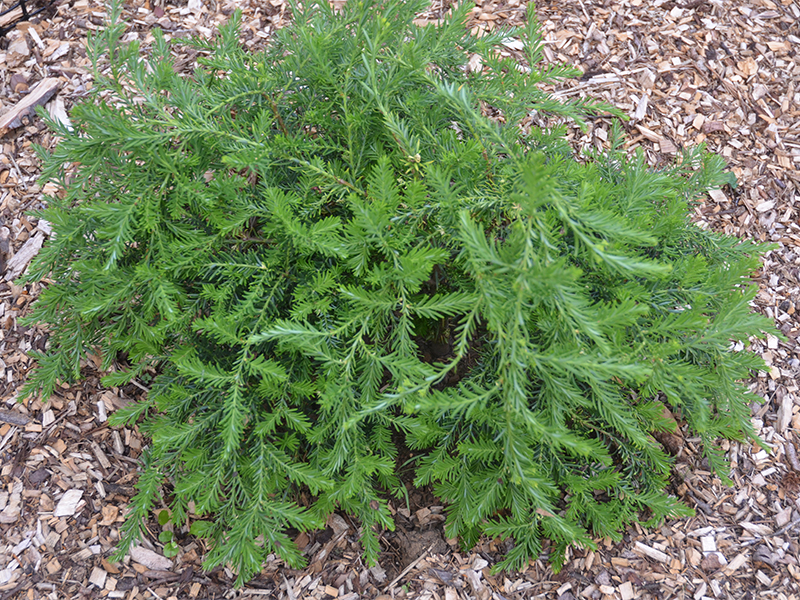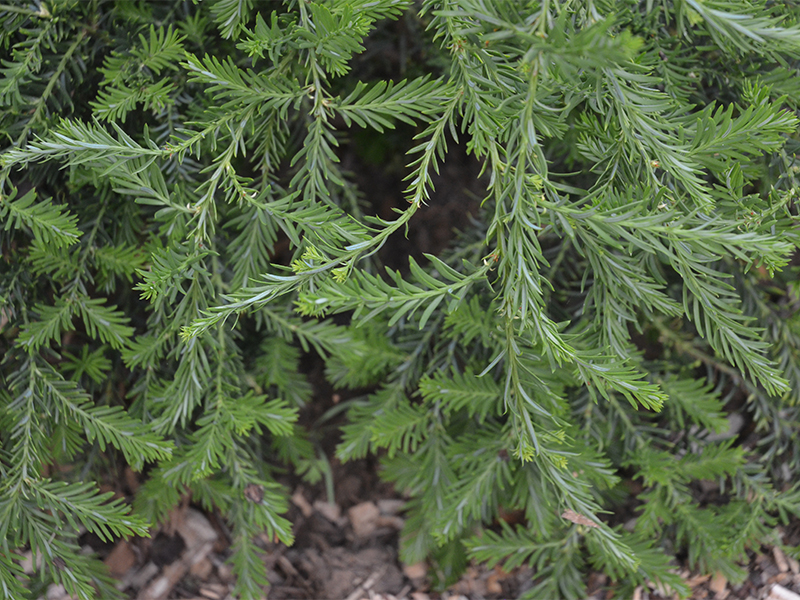| Shape | Bushy and pyramidal. |
| Landscape | Hedges, screens and low maintenance architectural gardens. |
| Propagation | Seed sown in containers outdoors in spring or semi-rip cuttings in late summer. |
| Cultivation | Prefers full sun in moist but well-drained soils. |
| Pests | Generally pest and disease free. |
| Notable Specimens | Westonbirt, The National Arboretum, Tetbury, Gloucestershire, England. |
| Habitat | Forests at elevations of 200 - 1280 m. |
| Bark/Stem Description | Multi-stemmed with thin bark. |
| Leaf Description | Linear, falcate, coriaceous, yew-like leaves that are 1 - 2.5 cm long and 1.5 - 2 mm wide with a glaucous stripe on either side of the midrib. |
| Flower Description | Male cones are produced in sprays of 5 - 20. Pollen cones in groups of 10 - 20, each attahced on an axillary shoot that is 10 - 25 mm long and is 5 - 8 mm by 2.5 - 3 mm. Seed cones are 15 - 20 mm long and 10 - 15 mm wide on a 2 - 3 cm peduncle. |
| Fruit Description | Small, berry-like fruit that resembles a plum and is 10 - 15 mm wide. |
| Colour Description | The bark is grey. The leaves are a bluish-green. The male cones are cream. The fruit is green and ripens to a purplish-brown. |
| Texture Description | The bark is smooth. |

